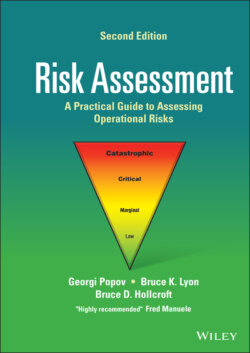Читать книгу Risk Assessment - Georgi Popov - Страница 67
3.13 Communication
ОглавлениеSuccessful risk assessment processes are dependent on effective communication among stakeholders prior to, during, and after the process. Without proper communication, severe consequences can occur. Take for instance, the NASA’s Space Shuttle Columbia explosion which occurred on 1 February 2003 claiming seven lives. The investigation that followed determined that a significant root cause to the incident was a lack of effective communication of critical safety information. The Synopsis of the Report of the Columbia Accident Investigation Board concluded that organizational causes including lack of communication contributed to the incident. “Cultural traits and organizational practices detrimental to safety were allowed to develop, including: reliance on past success as a substitute for sound engineering practices…, organizational barriers that prevented effective communication of critical safety information and stifled professional differences of opinion; lack of integrated management across program elements; and the evolution of an informal chain of command and decision‐making processes that operated outside the organization’s rules. (p. 9)”
Communication is a provision of both ANSI/ASSP/ISO 31010 and ANSI Z590.3, and is also required by virtually all of the national and international risk management, and safety management standards such as ANSI/ASIS/RIMS RA.1, Risk Assessment, ANSI/ASSP/ISO 45001, ANSI/ASSP Z10.0, as well as the OSHA VPP. In spite of guidance provided, ineffective communication continues to be a leading cause to poor outcomes such as FSI.
As with many other functions in organizations, it should be made a priority to communicate effectively when performing risk assessments. Those involved in the risk assessments should think about who could help them do the risk assessment more effectively. For example, they could ask others within their own departments for input. Alternatively, they should think about who might be interested and benefit from the risk assessment that is being performed and let them know the outcome. An effective process will involve stakeholders throughout the process and seek their input. Internal personnel such as the assessment team, management, affected operators, and uses of the systems as well as external stakeholders such as customers, investors, partners, suppliers, and vendors should be included in the communication process. In rare situation, an exception may exist where there are legal or Fair Trade Commission implications, or other reasons where communication about the risk assessment may need to be limited.
